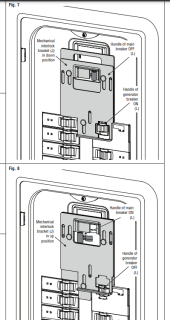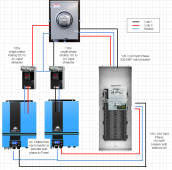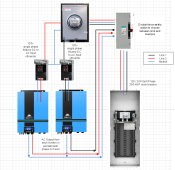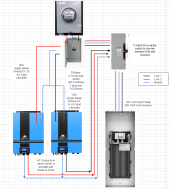Hello everyone -
I have been searching around for what might be considered the best practice approach to accomplish a new solar build out.
I am looking at running 2x SP6548 in parrallel in Split Phase.
SP6548 Manual
I am installing a Leviton 42 space Load Center
LP420-BPD
Ideally I would like to use the Manual Transfer Interlock Kit to switch the load center between the Grid and my Inverter\Battery\Solar setup. This is the Main Load center for the house and needs to be able to run 120 and 240.
Configuring the the SP6548s seems to be explained in great detail - (setting 2P1 and 2P2 for the 180 phase difference) but i am just wanting to clarify a few things with how the power comes INTO the load center from the 2x intervers.
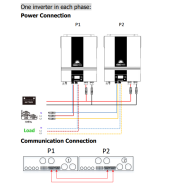
I found a few videos online of Simliar setups but i also was looking for some other opinons from the forum of my specific setup.
This video is for different inverters in parallel but obviously its the same concept
DIY Victron 120/240V Split Phase System for Beginners! No Programming Required
It has Both hots from the Inverters coming into the 2 pole breaker that would be setup with the interock kit.
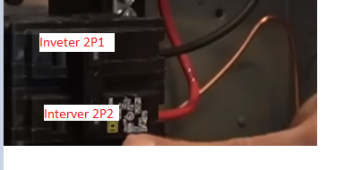
Documentation (or view the link above for the full manual):
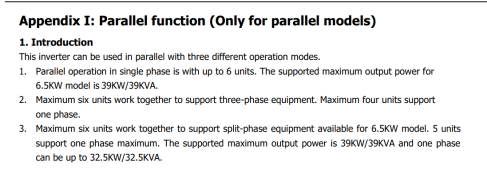
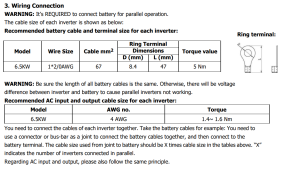

I hope my question makes sense - let me know if you need any other clarification - thanks again for your time -
I have been searching around for what might be considered the best practice approach to accomplish a new solar build out.
I am looking at running 2x SP6548 in parrallel in Split Phase.
SP6548 Manual
I am installing a Leviton 42 space Load Center
LP420-BPD
Ideally I would like to use the Manual Transfer Interlock Kit to switch the load center between the Grid and my Inverter\Battery\Solar setup. This is the Main Load center for the house and needs to be able to run 120 and 240.
Configuring the the SP6548s seems to be explained in great detail - (setting 2P1 and 2P2 for the 180 phase difference) but i am just wanting to clarify a few things with how the power comes INTO the load center from the 2x intervers.

I found a few videos online of Simliar setups but i also was looking for some other opinons from the forum of my specific setup.
This video is for different inverters in parallel but obviously its the same concept
DIY Victron 120/240V Split Phase System for Beginners! No Programming Required
It has Both hots from the Inverters coming into the 2 pole breaker that would be setup with the interock kit.

- Is this the best way to do this of a "Off-grid" system that i want to use to power my whole house?
- When it comes to choosing the correct size Breaker for the power coming into the loadcenter from both inverters - what would be recommended?
- For a single unit it seems like 60amp is the size but for 2 in parrallel I was not sure from the documentation.
Documentation (or view the link above for the full manual):



I hope my question makes sense - let me know if you need any other clarification - thanks again for your time -



